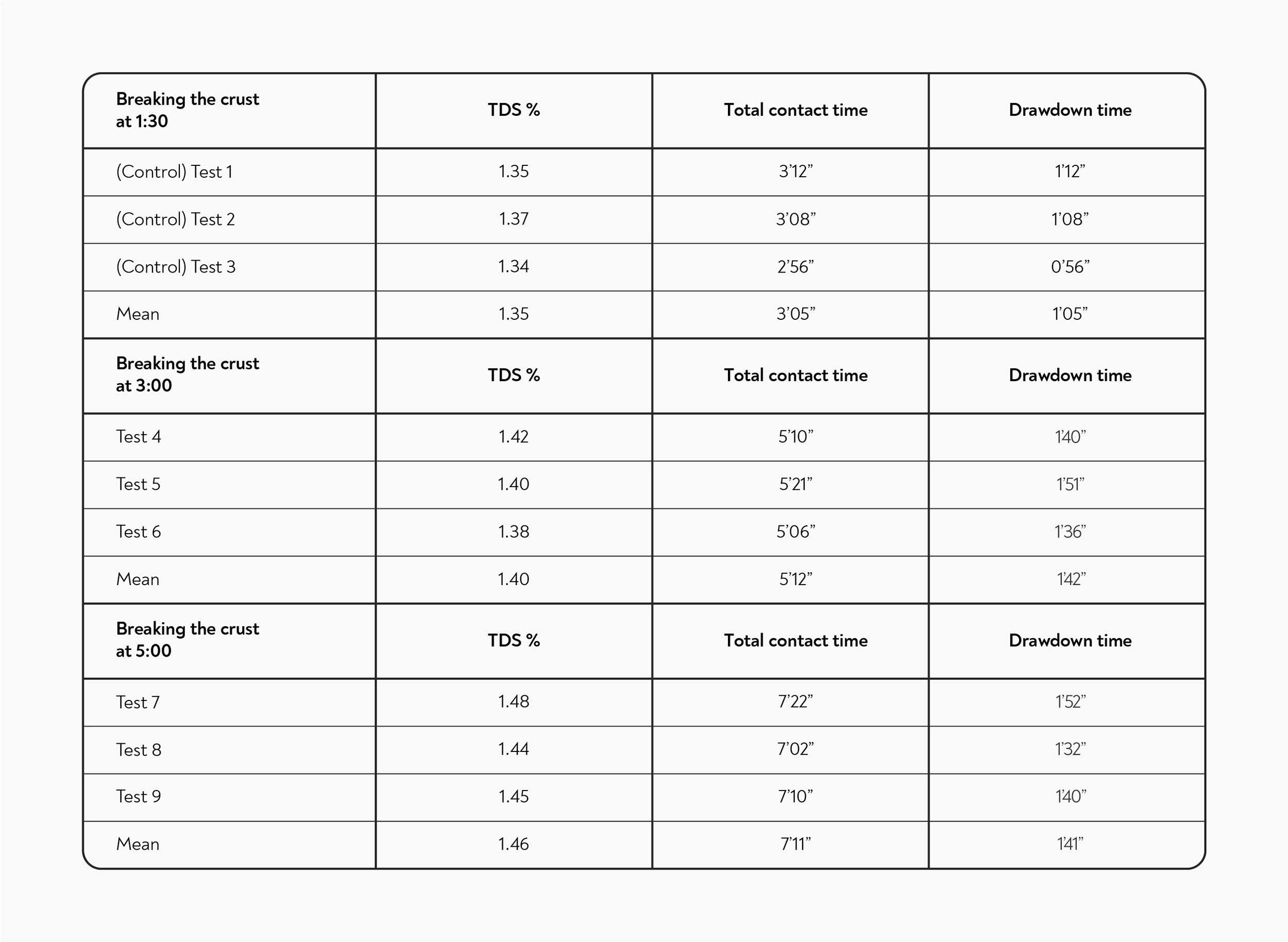In this lesson, Italian barista trainer, Jessica Sartiani, conducts a series of experiments using the Clever Dripper. These tests are based on a Clever Dripper recipe she developed for the 2019, Italian Brewer’s Cup. First Jessica presents her original approach. Then she explores how changes in ‘time’ and ‘grind profile’ can affect extraction yields.
Jessica Sartiani’s 2019 Italian Brewers Cup Recipe
Dose: 18 grams
Total brew water: 250 grams
Water temperature: 93°C
Method
In Jessica’s competition method, she adds all the water in one steady pour at the start of the brewing process. She breaks the crust after 1:30 (minutes:seconds). She then allows the grinds to settle for 30 seconds. At 2 minutes into the brewing process, she lifts the Clever Dripper onto a carafe, which opens the runner valve at the base of the brewer and initiates the drawdown phase. For these experiments, Jessica uses a natural-processed Ethiopian coffee.
Experiment 1: When Should I Break the Crust?
In the first experiment, Jessica measures the TDS and contact time (including the drawdown time) of brews made with the same brew ratio and water temperature, except that she varies the amount of time that passes before she breaks the crust. In the table below, we recorded the TDS percentage, drawdown times, and total contact time of brews where the crust is broken after 1:30, 3:00, and 5:00 intervals.
Observations
As you might expect, brews that were steeped for longer before we initiated the drawdown reached higher extraction yields in this experiment. This experiment produced a very surprising finding, however: The brews steeped for 3 minutes and 5 minutes, respectively, took twice as long to draw down compared with the control brews, which only took 1 minute. From a time-efficiency point of view, it is clear that breaking the crust at 1:30 is advantageous. The combination of a short contact time and a fast drawdown reduced the mean extraction yield,
